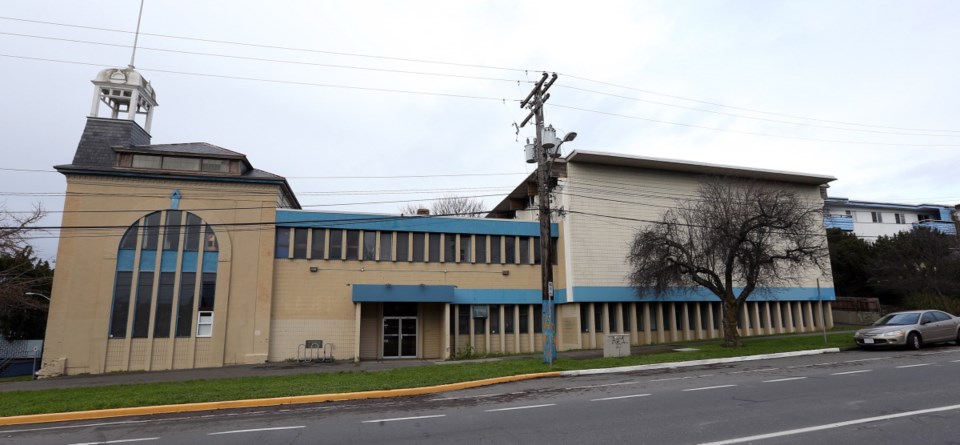The former Boys and Girls Club on Yates Street will once again be used to shelter homeless people this winter.
Victoria councillors Thursday unanimously approved leasing the space at 1240 Yates St. — called My Place — to B.C. Housing for six months. It will serve as transitional housing for 40 people and be operated by Our Place Society.
Unlike last year when people were moved directly from living rough into the shelter, the plan this year is to transition people from the shelter at First Metropolitan Church into My Place.
“Last time, it was very different in that people were taken who were experiencing homelessness sleeping in parks or at tent city and moved into the Boys and Girls Club,” said Coun. Charlayne Thonrton-Joe.
“This time, they will be individuals who have already stayed for a period of time at the First Met shelter. So they have been evaluated and vetted,” she said.
Residents will be in cubicles rather than tents set up in the auditorium. “They find that people, when they were in tents, were more isolated and didn’t have as much contact with staff,” Thornton-Joe said.
Like last year, there will be 24/7 security on site and the requirement to monitor the surrounding area to ensure garbage is collected.
Operation of the My Place shelter last year appears to have eased neighbourhood concerns.
Last year, about 100 people, many worried about the impact the shelter might have on the neighbourhood, crammed a public meeting to voice concerns.
This year, about 25 people came to a meeting at Central Middle School Wednesday evening, many of whom supported the shelter.
“Some did express concerns of the shelter being across from the school, but the ones that did asked to be part of the monthly [neighbourhood] team meeting … so we can address some of their concerns,” Thornton-Joe said.
Mayor Lisa Helps noted the housing landscape is changing.
“Because of investments the province has made, there’s actually places for people to move into from My Place. One of them will be for anyone 55 or older — Mount Edwards [Court] second floor. People will be able to transition out of the My Place traditional housing into something more permanent,” Helps said.
Coun. Ben Isitt supported the lease but said what is ultimately needed is a sufficient supply of non-market social housing.
He said Victoria needs more “decommodified” housing, where it is viewed as an entitlement, rather than a commodity. Centres such as Copenhagen and Amsterdam have as much as 50 per cent decommodified housing, while Victoria has five per cent, he said. “Really, the pressing need for this community and province is a massive expansion of decommodified, state-owned and state-supported housing. That’s going to take a lot of political mobilization and pressure.”
Coun. Geoff Young said Isitt’s call for such housing was not unlike Russia’s Bolshevik Revolution which sought not only the “decommodification” of housing but of all means of production. “I, as might be guessed, have some concerns with that as a long-term objective,” Young said.
Isitt took issue with Young’s characterization, saying the examples he cited were “advanced, western, democratic states with fairly strong protections for human rights.”
Young said much of the success of last year’s shelter operation was due to limited use and the fact operators were anticipating the possibility of renewing their lease.
“They paid attention to the impact on the neighbourhood.”
They had people looking at what was happening around them. They responded to the neighbourhood,” Young said.
“That is in contrast, I would say, to some very unfortunate experiences that we have had with other operators of various kinds of temporary shelters who have been distinctly less responsive to their negative impacts on the neighbourhood.”



